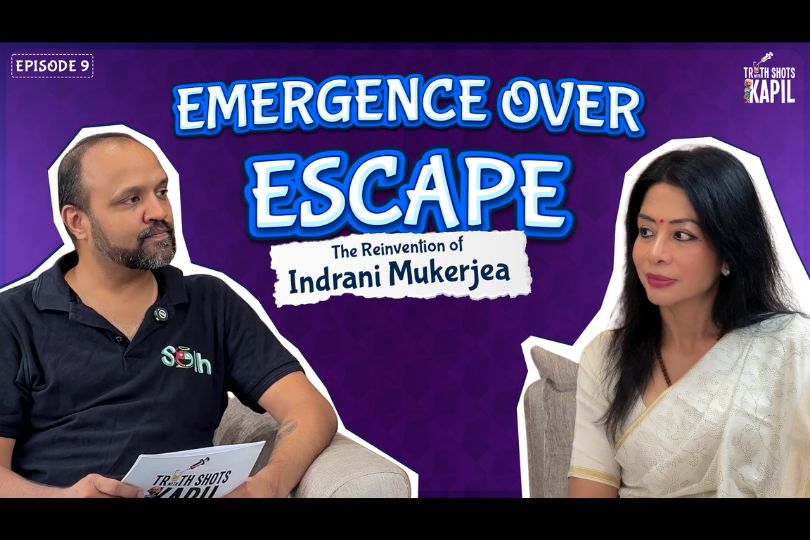Interview with Madhulika Liddle & Swapna Liddle, Author of “Gardens of Delhi” & More
Interview with Madhulika Liddle and Swapna Liddle: Explore Delhi's green spaces, historical gardens, and the blend of history, culture, and nature in "Gardens of Delhi."on May 27, 2024
.jpg)
Swapna Liddle has written several books on the history of Delhi. She has volunteered for many years with the Indian National Trust for Art and Cultural Heritage (INTACH), to draw attention to the need to preserve the city’s historic sites.
Madhulika Liddle is a novelist and award-winning short story writer, best known as a writer of historical fiction. Madhulika is a keen amateur naturalist, especially interested in trees and birds. She lives in Noida, India, and blogs at www.madhulikaliddle.com
Frontlist: As World Environment Day approaches, your upcoming book "Gardens of Delhi" takes center stage, celebrating the city's green spaces. How do you envision your book contributing to the global conversation on environmental conservation and the importance of urban greenery?
Madhulika: I hope our book will be able to help educate and enlighten both Delhi’s locals and visitors to the city about the gardens and green spaces of the city. Sadly, most people think of gardens only as pretty picnic spots and tend to overlook both their (often fascinating) histories as well as the (often equally fascinating) plants and trees that can be found here. Through these essays, we’ve tried to highlight the indigenous vegetation of Delhi, and to show what is being done—and needs to be done—to help repair an ecosystem that is already crumbling.
Frontlist: "Gardens of Delhi" promises to provide readers with insights into the development of the city's green cover over the centuries. Can you share some fascinating historical anecdotes or lesser-known facts about Delhi's gardens that you uncovered during your research?
Swapna: I can share two. One is from an early garden, Shalimar Bagh. This garden, laid out during the reign of Shahjahan, was also where Aurangzeb was crowned on 31 July 1658. Despite its historical significance, the garden was not protected by the Archaeological Survey of India until 1983! The other story is of Indraprastha Park, or Millenium Park, inaugurated in 2004. Not many people, at least the young, might know that this erstwhile landfill was transformed into a garden as a direct result of a public interest litigation.
Frontlist: Your book offers a blend of history, culture, and environmental awareness. How do you strike a balance between these different elements to create a cohesive and engaging narrative? Can you discuss your process for weaving together historical context, botanical information, and personal anecdotes?
Madhulika: For us, it was quite straightforward: we divided the work among ourselves. Given Swapna’s expertise in history, she handled the research and writing of the historical aspects of these gardens. Since I am more interested in and knowledgeable about nature, I handled the rest of it, describing the vegetation and other aspects of natural life in the gardens. Once we had compiled the essays, both of us individually and repeatedly went through the entire manuscript to make sure it fitted well, without repetitions or contradictions.
Frontlist: Nature writing often requires a deep connection to the environment and a keen observational eye. How do you cultivate your relationship with nature, and how does this personal connection influence your writing process? Can you share any memorable experiences or encounters with nature that have inspired your work?
Madhulika: Over the years, I have nurtured a close relationship with nature. While I may not be able to go to a large park or garden every week (let alone every day), I have a tiny garden of my own, where I’m lucky to play host to a range of birds, butterflies and other insects. Over the course of a day, just from my home office window, I’m able to stay fairly close to nature.
One of the most obvious ways in which my love for nature has manifested itself in my writing is in the many references I make to nature in my stories. My books are filled with descriptions, even if fleeting, of birds, trees, and plants, especially of Delhi. The calls of barbets and lapwings, the sight of a semal or a chamrod tree in bloom: these are among my favourite descriptions in my latest piece of fiction, a historical novel named An Unholy Drought.
Frontlist: Historical fiction and non-fiction alike require meticulous research to ensure accuracy and authenticity. What strategies do you employ to conduct thorough research for your historical and botanical writing? How do you verify sources and ensure the reliability of the information you incorporate into your narratives?
Madhulika: I try to make sure that I refer to books and scholarly articles, white papers, theses, etc for all research, especially historical. Wikipedia is a no-no for me, or at best, only ever a starting point for a deep-dive into whatever I’m trying to seek information about. I steer clear of writing historical nonfiction because that, I feel, is a specialized field for which I am not equipped (or trained) to write about. Historical fiction has the advantage that if you have not been able to find the facts about an event, a personality, or other details about a historical era, it is permissible to use artistic license! I am, of course, lucky that my sister Swapna is a historian, so when necessary, I turn to her for input.
For botanical or other nature-related writing, too, I tend to turn to books, but in this case, I also trust a good deal to my own senses. I like to record my own observations, and use those as a basis for when I write.
Frontlist: How do you balance the inherent joy of writing with the responsibility of captivating and engaging your readers? How does this dual purpose shape your approach to crafting narratives?
Madhulika: I personally think that if you are deeply passionate about what you’re writing, that excitement flows into your writing. I don’t write just for the sake of it (which is why I tend to steer clear of the bandwagon, the more obvious genres): I write only in those genres that really interest me. While this might mean I cater more to a niche market than a lot of other, more successful writers, at least it brings me joy—and that passion is transmitted to those readers who do share my interests.
Also, I cannot emphasize enough the importance of editing. Both by an external editor, as well as self-editing (I am critical of my own writing, and subject all my work to repeated rounds of self-edits). The intense editing and rework is what helps make a book more engaging.



.jpg)






.jpg)

.jpg)
.jpg)
.jpg)
.jpg)
.jpg)
.jpg)

.jpg)










Sorry! No comment found for this post.